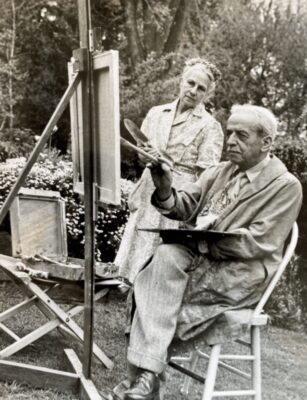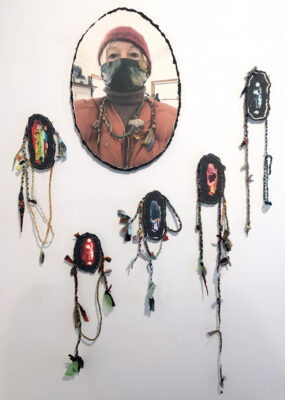
In the early decades of the 20th century, FIT founder and president Max Meyer (1876–1953), then a buyer for a major New York City cloak and suit manufacturer, commissioned thousands of drawings of French couture designs to be licensed for production in the U.S.. A new show in FIT’s Art and Design Gallery, Unconventional Then, Now, & Always: A Helix of FIT Influence from Max Meyer to Daria Dorosh, juxtaposes some of these watercolor and ink images from houses such as Chanel, Poiret, and Lanvin with comparable examples of actual garments from the study collection of FIT’s graduate program in Fashion and Textile Studies: History, Theory, Museum Practice. Each garment showcases student and alumni skills in costume conservation and mounting, while augmented reality technology brings the sketches to life. An adjoining gallery features the work of alum and former professor Daria Dorosh, PhD. Her contemporary art and fashion pieces respond to Meyer in many ways, and also stand on their own.
Karen Trivette, the head of the Gladys Marcus Library’s Special Collections and College Archives unit, organized the show with Dorosh. Trivette answered a few questions about the exhibition for Newsroom.
What’s the most surprising thing you learned about Max Meyer?
He truly was a much-beloved Grand-Père. Even with what seems to be a manic life of fashion buying, labor relating, and education reforming, he embraced, and was embraced by, his family; there seemed to be no forfeiture in any of his life’s directions.

In a few words, tell us about your favorite piece in the show. If I had to select a favorite, or at least the one piece that was absolutely non-negotiable vis-a-vis exhibition inclusion, it would be our centerpiece coat of circa 1923. At 100 years old, it still has the power to mesmerize and to inspire.
What drew you to Daria Dorosh’s work?
In a word: Daria! She is a true force of nature and nurture whose fierce talent is only outweighed by her loving and generous spirit.
How did you decide to juxtapose these two approaches to fashion?
Daria and I have had many conversations and one motif that kept reappearing was our need, or even desire, to “close the circle” (i.e., find meaning in or an understanding of) or should I say circles: the circle of fashion as a system; the circle of gender role fluidity; the circle that is technology as a birth, life, and death enabler; and/or the circle of creation, consumption, and obsolescence among many, many other fascinating circles.
The show is a collaboration of the Spatial Experience Design Department, Fashion and Textile Studies: History, Theory, Museum Practice, and the Special Collections and College Archives. It is on display through September 10, 2023.
